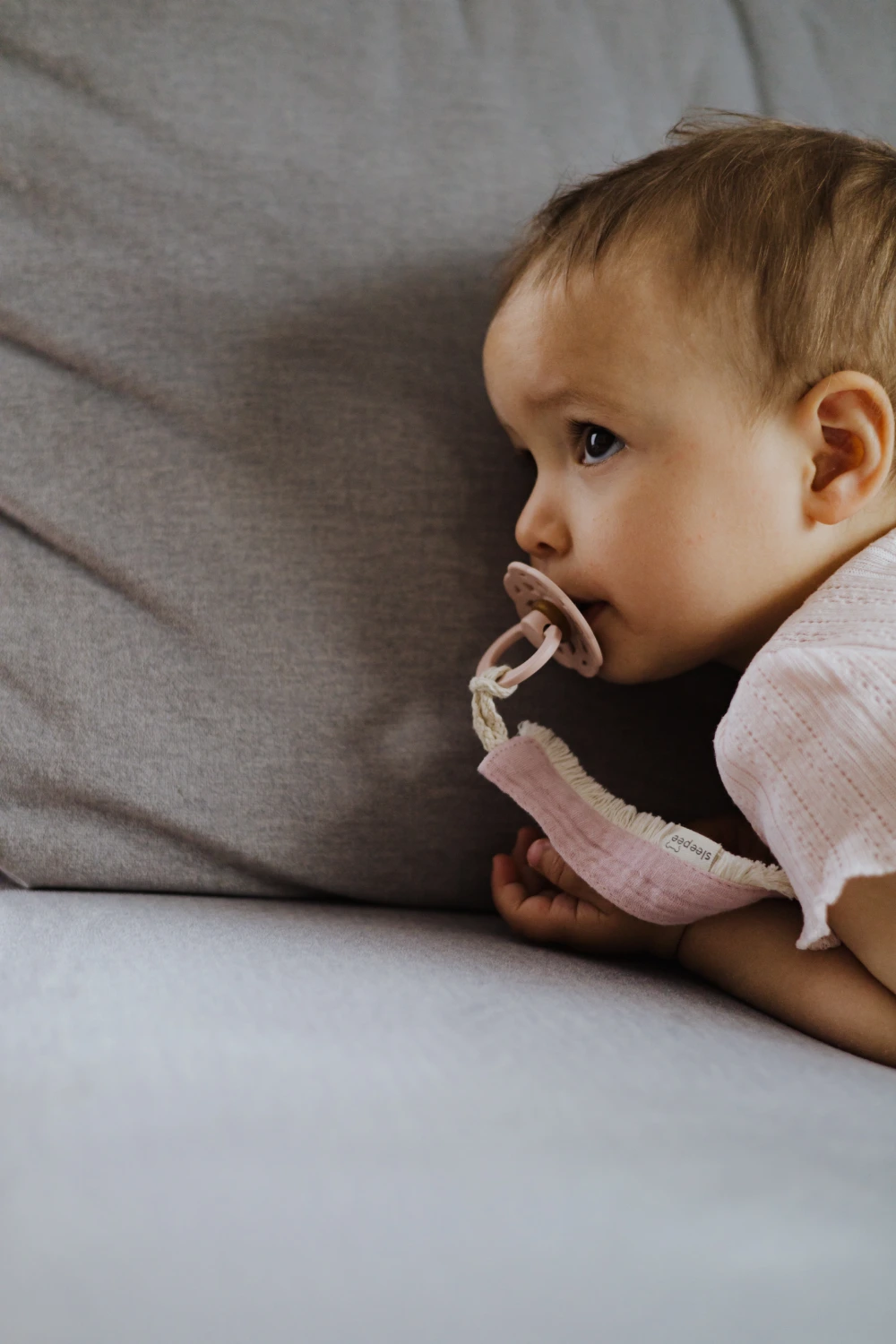Waarom is knuffelen belangrijk?

In de baarmoeder van de moeder wordt de baby omhuld door de zachte wanden van de baarmoeder. Het lichaam van de baby wordt vanaf het begin gestimuleerd door aanraking. Na de geboorte wordt de baby in de zorgzame armen van de moeder gelegd. Het eerste huid-op-huidcontact is het belangrijkste moment in het leven van de kleine. Kort na de geboorte droogt de vroedvrouw de peuter af en legt hem op mama's borst, waarna ze hem inwikkelt om hem te beschermen tegen warmteverlies. Het lichaam van de moeder kan de temperatuur verhogen waar de baby ligt om hem te verwarmen. Voor de pasgeborene is alles nieuw, de aanraking, de geuren, de geluiden, het licht, de lagere temperatuur. De baby op de buik van de moeder accepteert de nieuwe omstandigheden gemakkelijker, hoort haar hartslag, ruikt haar huid en krijgt zo meteen de eerste druppels colostrum, een natuurlijk "vaccin". Onder invloed van hormonen wordt de moeder verliefd op de baby, zelfs als ze zich eerder afvroeg of ze de nieuwe rol wel aankon. Lichamelijke nabijheid is cruciaal bij het opbouwen van een band, zowel tussen moeder en kind als in elke latere levensfase in relaties met andere mensen. Verantwoordelijk hiervoor is in grote mate oxytocine, bekend als het liefdeshormoon, dat in de hersenen vrijkomt onder invloed van knuffelen. Knuffelen en zorgen voor continue, verhoogde niveaus van oxytocine in het kind, wat een gevoel van veiligheid geeft en stresshormonen verlaagt. De baby is rustiger, slaapt beter en langer, is gemakkelijker te voeden en de zorg voor de baby is niet vermoeiend voor de ouders.
Laten we de vader niet vergeten!
De vader knuffelen met de baby bouwt een band op en vergemakkelijkt de overgang naar een nieuwe rol. Mannen die kinderen knuffelen zijn gevoeliger voor hun behoeften, meer bereid om bij het kind te blijven zodat mama het huis uit kan. Mannen die huid-op-huidcontact hebben ervaren met een pasgeboren baby via een keizersnede zijn meer betrokken bij de zorg voor de baby, en de baby's zijn rustiger, huilen minder en slapen beter, en als gevolg daarvan slaap jij meer.
En nu kom je thuis en hoor je: "niet wiegen, niet dragen want hij zal eraan wennen", niets is minder waar. Hij heeft immers geen tijd gehad om zichzelf te spenen en hij is de hele zwangerschap gewiegd in de buik van zijn moeder, zachtjes gemasseerd door het omringende foetale water. Baby's terroriseren niet, ze geven behoeften aan en als ouders aan die behoeften voldoen, zijn baby's "gemakkelijker te hanteren".
Knuffelen vermindert het niveau van stresshormonen bij baby's en stimuleert de afgifte van endorfine. Dit zijn natuurlijke opioïden die het gevoel van pijn verminderen en een gevoel van plezier geven.
Samenvatten waarom knuffelen?
Kinderen die geknuffeld worden, voelen zich geliefd en geaccepteerd en kunnen tegenslagen, ongelukjes en kleine verwondingen gemakkelijker verdragen.
Ze kunnen zich later in hun leven gemakkelijker redden, zijn moediger, hebben meer zelfvertrouwen en ontwikkelen zich sneller.
Knuffelen is verantwoordelijk voor de emotionele ontwikkeling van een kind
Aanraken ondersteunt de ontwikkeling van intelligentie door het aantal verbindingen tussen cellen in de hersenen te vergroten.
Zuigelingen ontvangen meer dan 80% van prikkels door aanraking, wat betekent dat ze over de wereld leren
Knuffelen ondersteunt de ontwikkeling en functie van het cardiovasculaire systeem en het ademhalingssysteem en verbetert de immuniteit.
Knuffelen is ook essentieel voor volwassenen. De Britse Hartstichting
organisatie een onderzoek uitgevoerd waaruit bleek dat Slechts 20 seconden knuffelen vermindert niet alleen stress, maar heeft ook een gunstig effect op het hart: het verlaagt de hartslag en bloeddruk en versterkt de hersenfunctie.
Laten we
knuffel
12 keer per dag om goed te ontwikkelen
.
8 keer per dag om gezond te blijven
4 keer per dag om te overleven
.
 Opgroeien slaapzak
Opgroeien slaapzak Slaapzak NewBorn
Slaapzak NewBorn Omkeerbare mousseline slaapzak
Omkeerbare mousseline slaapzak Slaapzakken met poten
Slaapzakken met poten Eerste Stap Wikkeldoek
Eerste Stap Wikkeldoek Tweede stap inwindsel
Tweede stap inwindsel Derde Stap Wikkeldoek
Derde Stap Wikkeldoek Wikkeldoekjes
Wikkeldoekjes Anti-zweet autostoel/draagkussentje 0+
Anti-zweet autostoel/draagkussentje 0+ Anti-zweet, ademende autostoel/wandelwagenmat 2+
Anti-zweet, ademende autostoel/wandelwagenmat 2+ Lightwear Mousseline autostoel wieg/deken
Lightwear Mousseline autostoel wieg/deken Winter autostoel wieg/deken
Winter autostoel wieg/deken Vlinder anti-schokkussen
Vlinder anti-schokkussen Hoofdvormend kussen
Hoofdvormend kussen Mousseline Teddybeer Kussen
Mousseline Teddybeer Kussen Bamboe Aanrakingsdeken
Bamboe Aanrakingsdeken Ultra Zachte Bamboe Deken
Ultra Zachte Bamboe Deken Beddengoed
Beddengoed Wieg
Wieg Speelmat
Speelmat Draagbaar aankleedkussen
Draagbaar aankleedkussen Anti-zweet reiswieg/brancardmatje
Anti-zweet reiswieg/brancardmatje Modulaire stootrand voor babybed
Modulaire stootrand voor babybed Mascottes
Mascottes